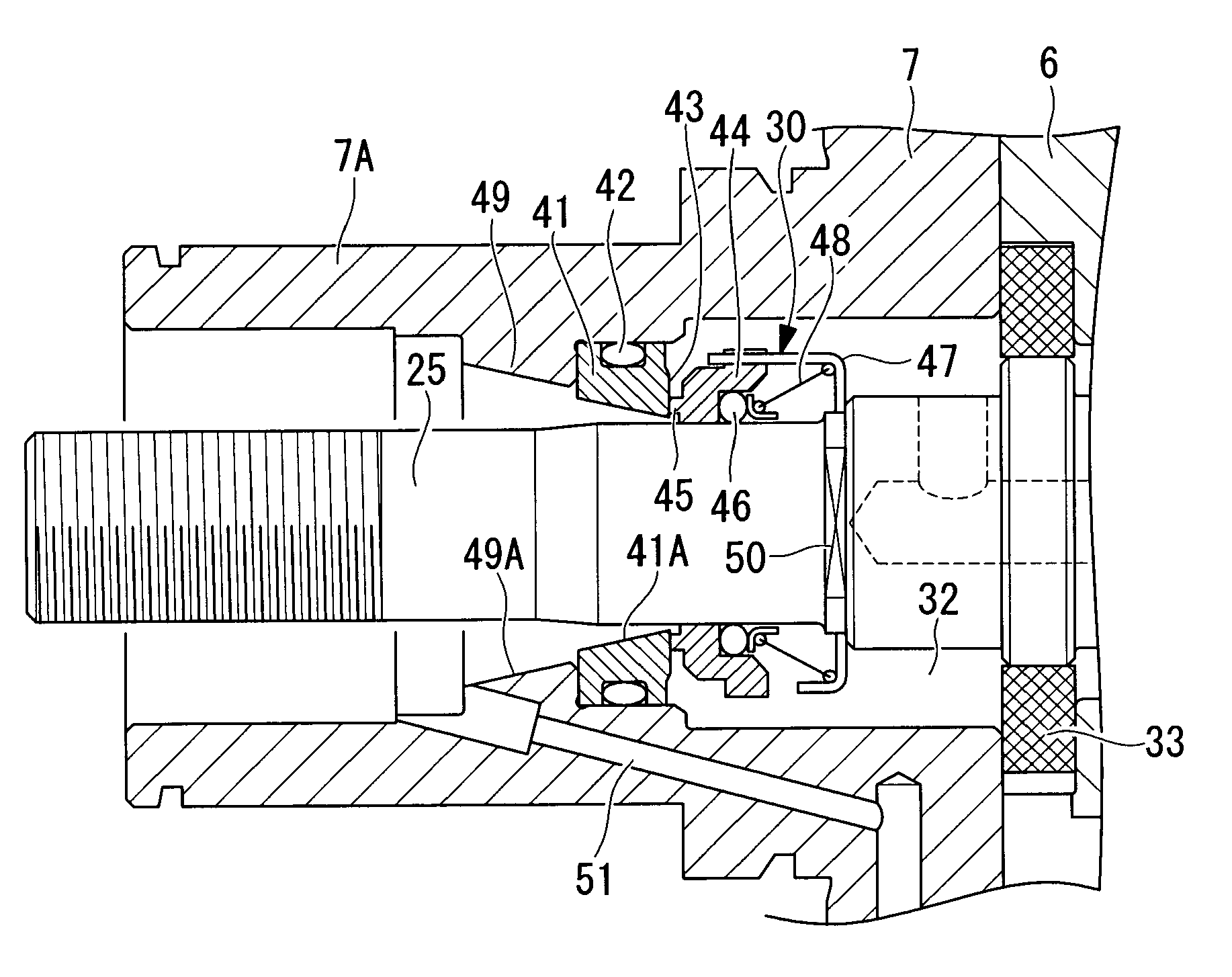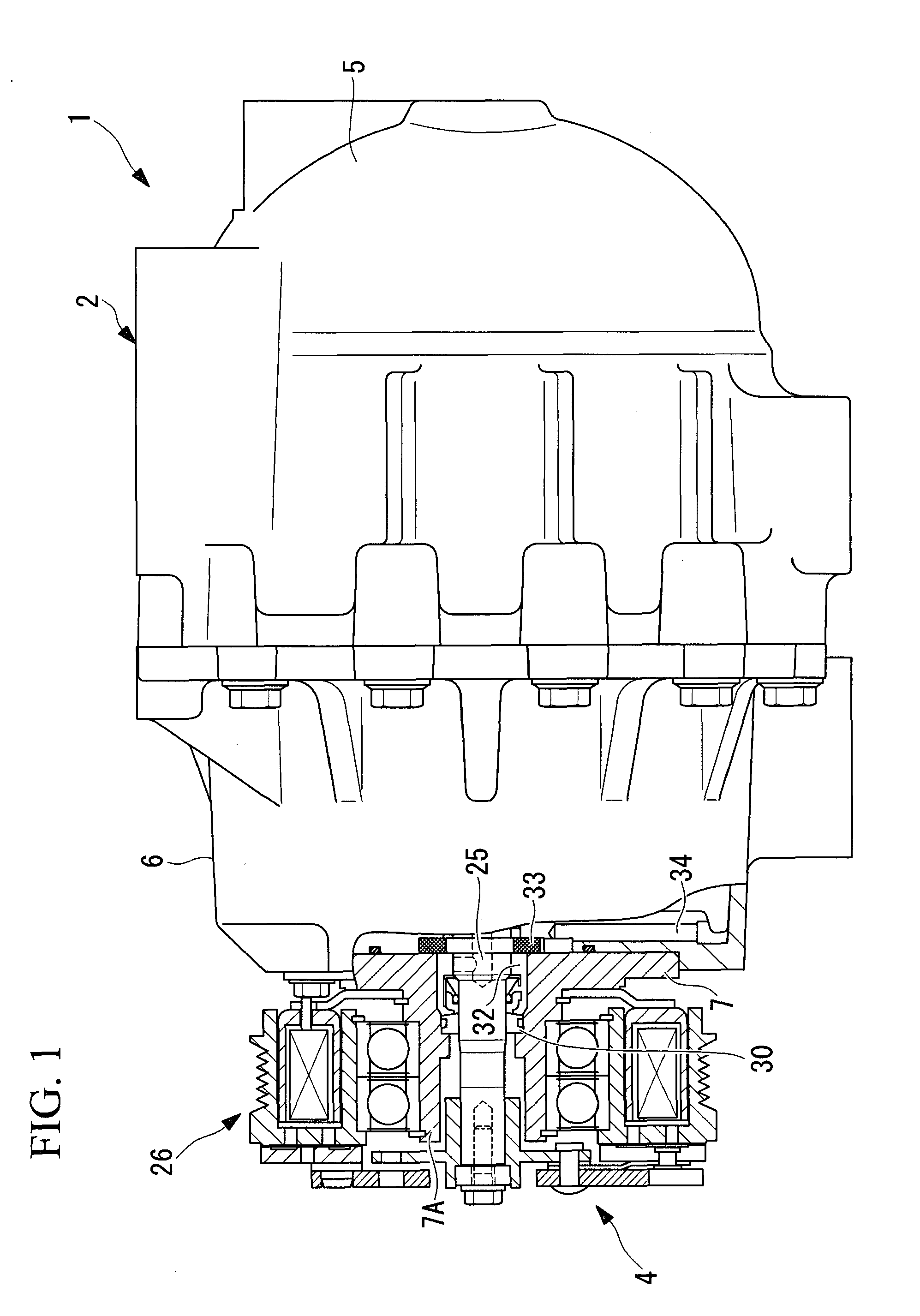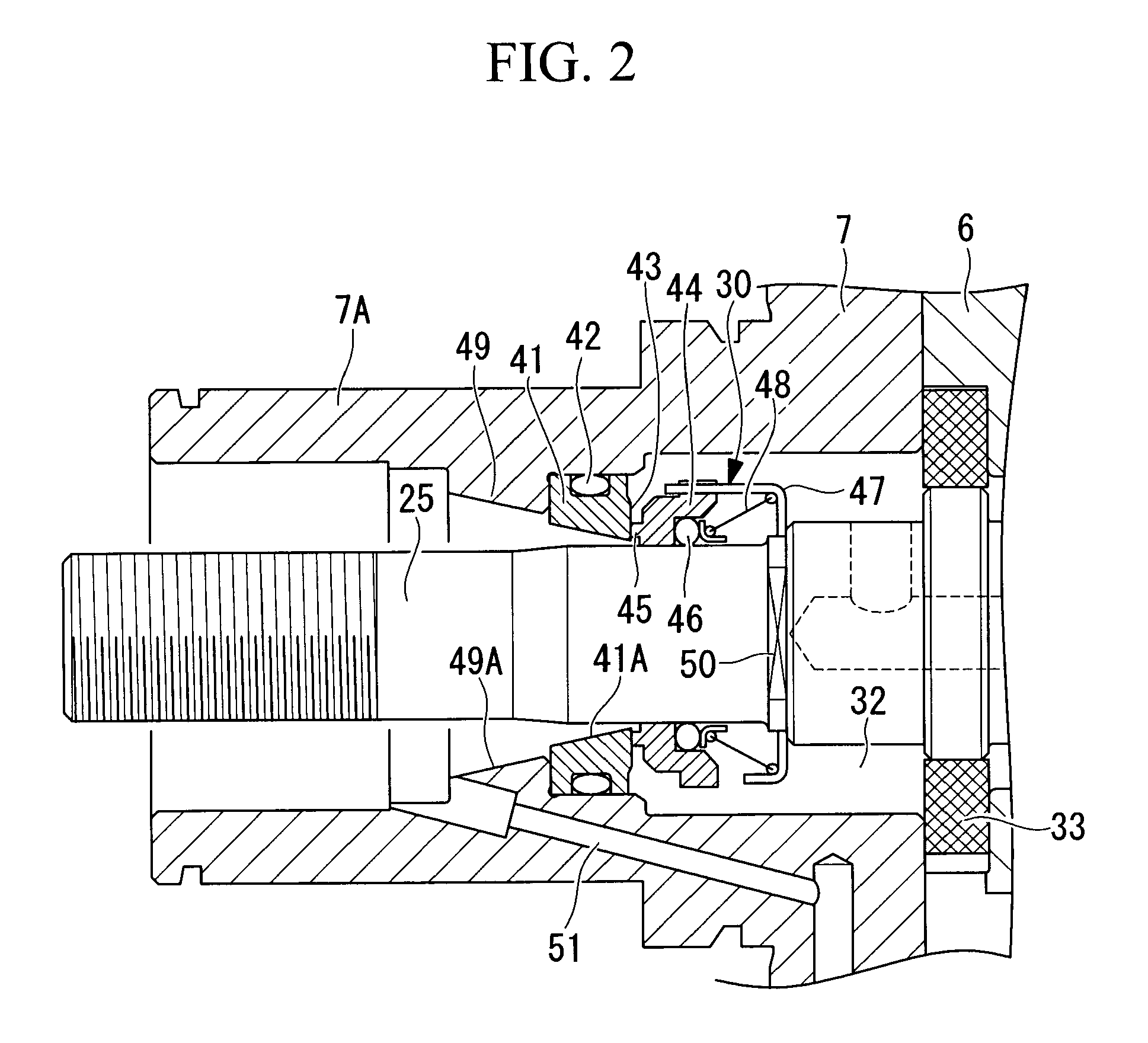Refrigerant compressor
a compressor and refrigerant technology, applied in the direction of positive displacement liquid engines, pumping, lighting and heating apparatus, etc., can solve the problems of insufficient effect, difficult processing, and difficult assembly process, so as to reduce the amount of heat generated, simplify the assembly process, and suppress the temperature increase in the vicinity of the stationary ring
- Summary
- Abstract
- Description
- Claims
- Application Information
AI Technical Summary
Benefits of technology
Problems solved by technology
Method used
Image
Examples
first embodiment
[0065]Hereinbelow, a first embodiment of the invention will be described with reference to FIGS. 1 and 2.
[0066]FIG. 1 shows the outer appearance, partly in section, of a refrigerant compressor according to the first embodiment of the invention. A refrigerant compressor 1 has a cylindrical housing 2 extending horizontally. The housing 2 is constructed by integrally coupling a rear housing 5, a front housing 6, and a drive unit housing 7.
[0067]A compression mechanism, not shown, for compressing refrigerant gas is incorporated in the internal space of the housing 2. This compression mechanism may be any type of compression mechanism, such as a publicly-known swash plate type, a rotary type, or a scroll type compression mechanism. The housing 2 is provided with a suction port, not shown, for sucking a low-pressure refrigerant gas, and a discharge port, not shown, for discharging the high-temperature and high-pressure refrigerant gas that has been compressed. In the interior of the housi...
second embodiment
[0083]Next, a second embodiment of the invention will be described with reference to FIG. 3.
[0084]The present embodiment differs from the foregoing first embodiment in that the structure of the stationary ring 41 of the mechanical seal 30 is partially changed. In other respects, this embodiment is the same as the first embodiment, so the description thereof will be omitted.
[0085]FIG. 3 shows a vertical cross-sectional view of the inner structure of the drive unit housing 7 portion. In the present embodiment, the inner diameter D1 of the sliding protuberance 45 provided for the rotary ring 44 and the inner diameter D2 of the inner circumferential surface of the stationary ring 41 are made approximately equal to each other. The inner diameter D1 of the sliding protuberance 45 and the inner diameter D2 of the inner circumferential surface of the stationary ring 41 are preferably set so as to satisfy the expression (D1−D2) / D1≦0.07.
[0086]In the above-described embodiment, the inner diame...
third embodiment
[0089]Next, a third embodiment of the invention will be described with reference to FIG. 4.
[0090]The present embodiment has a different structure for transferring leaked oil from the mechanical seal 30 to the oil discharge hole 51 from that of the foregoing first embodiment. In other respects, this embodiment is the same as the first embodiment, so the description thereof will be omitted.
[0091]As shown in FIG. 4, the present embodiment has a configuration in which leaked oil is transported in a helical groove 52 on the outer circumferential surface of the rotating shaft 25 extending the entire way from the portion outward from where of the mechanical seal 30 is set to a position corresponding to the oil discharge hole 51 or a part thereof, by rotation of the rotating shaft 25.
[0092]With the above-described configuration, even if lubricating oil leaks out from between the contact sliding portions of the mechanical seal 30 to the inner circumferential side of the stationary ring 41, t...
PUM
 Login to View More
Login to View More Abstract
Description
Claims
Application Information
 Login to View More
Login to View More - R&D
- Intellectual Property
- Life Sciences
- Materials
- Tech Scout
- Unparalleled Data Quality
- Higher Quality Content
- 60% Fewer Hallucinations
Browse by: Latest US Patents, China's latest patents, Technical Efficacy Thesaurus, Application Domain, Technology Topic, Popular Technical Reports.
© 2025 PatSnap. All rights reserved.Legal|Privacy policy|Modern Slavery Act Transparency Statement|Sitemap|About US| Contact US: help@patsnap.com



